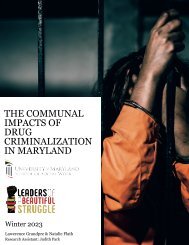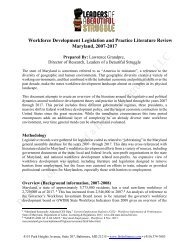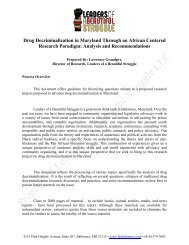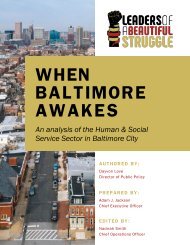Models for Participatory Budgeting
Participatory Budgeting (PB) has become a schizophrenic term, used as easily by neoliberal technocrats as it has been used by leftists seeking redistribution of wealth. As such, examining the function of any PB scheme with a critical lens is essential to determine whether it is an attempt to redistribute resources and power, or a tool to manufacture consent for the status quo and undermine/co-opt forces of resistance. While the goal of this analysis is not to delve deeply into the technical minutiae around the different processes, there is one clarification which may be useful to make at the beginning of the section. Much of what is often called PB could also be considered “participatory urban planning.” The distinction is that while budgeting denotes an explicit focus on allocating a discrete set of funds, planning seeks to take a more comprehensive survey of people's feelings, needs and problems, and generates a list of interventions based upon that feedback. Many straddle the line and include elements of both. This section will focus on processes which allocate revenue directly, will help explain why some interventions (Baltimore City Children and Youth Fund) will receive more direct attention and others (New York Cities Participatory Planning sessions) might receive less.
Participatory Budgeting (PB) has become a schizophrenic term, used as easily by neoliberal technocrats as it has been used by leftists seeking redistribution of wealth. As such, examining the function of any PB scheme with a critical lens is essential to determine whether it is an attempt to redistribute resources and power, or a tool to manufacture consent for the status quo and undermine/co-opt forces of resistance.
While the goal of this analysis is not to delve deeply into the technical minutiae around the different processes, there is one clarification which may be useful to make at the beginning of the section. Much of what is often called PB could also be considered “participatory urban planning.” The distinction is that while budgeting denotes an explicit focus on allocating a discrete set of funds, planning seeks to take a more comprehensive survey of people's feelings, needs and problems, and generates a list of interventions based upon that feedback. Many straddle the line and include elements of both. This section will focus on processes which allocate revenue directly, will help explain why some interventions (Baltimore City Children and Youth Fund) will receive more direct attention and others (New York Cities Participatory Planning sessions) might receive less.
- No tags were found...
Create successful ePaper yourself
Turn your PDF publications into a flip-book with our unique Google optimized e-Paper software.
presenting these criteria.<br />
Paula asked if anyone had other criteria to add. Yasmín said that she<br />
wanted to stay near her brother’s family, so maybe they could add “family<br />
members nearby” to the list. Juan nodded and posted it on the wall. Maxi<br />
joked that “whoever serves the mate gets to stay.” Others suggested a few<br />
more serious criteria. After 15 minutes the discussion died down, so Juan<br />
called <strong>for</strong> a vote to set the order of the criteria. Paula handed each family a<br />
paper strip with the numbers 1 to 10 printed in a column. Juan explained<br />
that everyone should think about which criteria mattered most, and then<br />
come up to the wall to label them in order of importance. After some discussions,<br />
people tore their sheets into 10 pieces and, armed with glue sticks,<br />
stuck the numbers on the criteria sheets to show their preferences (see figure<br />
5.4). Paula counted the votes, to determine which criteria would have<br />
top priority <strong>for</strong> deciding land disputes.<br />
Juan thanked everyone <strong>for</strong> prioritizing the criteria, and invited them up<br />
to the table in the middle of the room. A giant map lay on the table, with<br />
each family’s house labeled. Their task was to suggest where passageways<br />
should go, using several long rectangular cutouts of colored transparency<br />
Paula asked if anyone had other criteria to add. Yasmín said that she<br />
wanted to stay near her brother’s family, so maybe they could add “family sheets. As Juan<br />
explained, each cutout represented a passageway, to scale<br />
with the map. He moved several cutouts around the map, to illustrate how<br />
they could be placed.<br />
After Juan’s demonstration, the neighbors began moving the pieces<br />
around, and new questions surfaced. Did the passageways have to be<br />
straight, like the cutouts? Yes, because otherwise they would be unsafe.<br />
Why were some cutouts wider than others? Because the width depended<br />
on how many families used the passageway to reach their house. As Mónica<br />
noticed, the cutouts were labeled with different sizes: 1.5 meters wide <strong>for</strong><br />
access to one house, 1.8 meters <strong>for</strong> two houses, and so <strong>for</strong>th.<br />
After 20 minutes of playing with the cutouts, participants settled on<br />
locations <strong>for</strong> two passageways. With criteria and passageways decided, Juan<br />
called the meeting to a close around 11:00.<br />
The rule-making workshop, and others like it, helped generate and legitimate<br />
Rosario Hábitat’s rules—what residents could and could not do. To do<br />
this, it used several of the same game mechanics that designers use to establish<br />
game rules: participant-generated rules, multimodal presentation, narrative,<br />
just-in-time in<strong>for</strong>mation, and modeling.<br />
4151 Park Heights Avenue, Suite 207, Baltimore, MD 21215 • www.lbsbaltimore.com • (410) 374-7683









